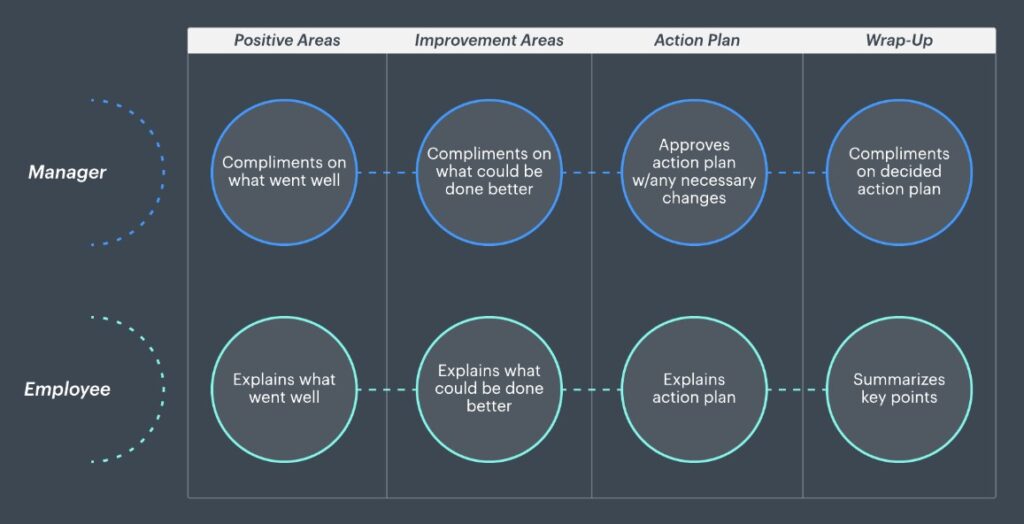How to Have Difficult Conversations on Feedback
We’ve all been there – facing a feedback conversation that might be tense, emotional, or uncomfortable. Whether it’s providing constructive feedback to a colleague or discussing a sensitive topic with a team member, difficult conversations can feel like a tightrope walk. But challenging feedback, when approached thoughtfully, can be some of the most impactful feedback we offer. It opens doors for growth, strengthens relationships, and fosters a culture of trust and continuous improvement.
This week’s post delves into why these difficult feedback conversations matter and offers a practical, balanced approach using the Pendleton model. With this model, even the toughest feedback can be structured in a way that encourages reflection and positive action.
Why Difficult Feedback Matters
Growth through Challenge
Difficult feedback conversations are often where the real growth happens. When we’re honest about the challenges or areas for improvement, we create opportunities for meaningful change. These conversations highlight areas that might be holding someone back from reaching their full potential, and addressing them head-on can lead to remarkable breakthroughs.
Building Trust and Transparency
Challenging feedback conversations can also reinforce trust within teams. When feedback is given openly and with respect, it shows that we value honesty and are committed to helping others succeed. Rather than avoiding difficult topics, embracing them strengthens the bonds within teams and reinforces a culture where improvement is everyone’s goal.
Why Do Difficult Conversations Feel So Challenging?
There’s no denying that challenging feedback conversations can be uncomfortable. Here are some common reasons why these conversations can feel tough:

- Emotional Reactions: When feedback touches on sensitive areas, it can trigger strong emotional responses. Both givers and receivers may find it difficult to remain fully objective.
- Fear of Conflict: People often avoid tough feedback out of concern for potential conflict, worrying about hurting feelings or creating tension.
- Communication Barriers: When feedback isn’t clear or is misinterpreted, it can lead to defensiveness or confusion, which only intensifies the difficulty of the conversation.
Introducing the Pendleton Model for Balanced, Structured Feedback
To navigate difficult feedback conversations effectively, a structured approach can make all the difference. This week’s post includes a tool on the Pendleton model, a method designed to foster balance, encourage self-assessment, and create actionable solutions. By framing feedback constructively, the Pendleton model helps reduce tension and keeps the conversation solution-oriented. Download your copy of the tool now.
Here’s how the Pendleton model works:
- Step 1: Ask the Recipient to Identify Positives
Begin by inviting the recipient to reflect on what they think went well. This approach allows them to self-assess and opens the conversation on a positive, self-driven note. - Step 2: Highlight What You Thought Went Well
Reinforce the positives by sharing your observations on what the recipient did well. This step builds a balanced perspective and eases into the conversation by recognizing strengths before moving into areas for improvement. - Step 3: Ask the Recipient to Identify Areas for Improvement
Next, ask the recipient what they think could be improved. Inviting them to self-identify areas for growth can reduce defensiveness, making it easier for them to accept and act on feedback. - Step 4: Share Your Thoughts on Areas for Improvement
Add your observations on specific areas where improvement is needed. Keep the feedback factual and focused on behaviors rather than assumptions or interpretations. - Step 5: Agree on Action Steps Together
Conclude by collaboratively identifying actionable steps for improvement, ensuring that both sides are aligned and committed to the path forward.
Example of the Pendleton Model in Action:
“Let’s start with what you think went well on the recent project,” (Step 1) you might say. If they mention something like, “I think I kept the team informed,” you can add, “Yes, I noticed you did a great job organizing updates and keeping everyone in the loop” (Step 2). Then, move to “What do you think could be improved?” (Step 3). If they don’t address a key point, you could say, “I observed some missed deadlines that impacted the team’s overall timeline” (Step 4). Finally, wrap up with, “Let’s work together to build a system for tracking deadlines more effectively” (Step 5).

The Pendleton model creates a balanced conversation that encourages the recipient to participate actively in their growth process, increasing the likelihood that they’ll respond positively to the feedback.
Strategies for Managing Emotional Reactions
Difficult feedback conversations can bring up strong emotions. Here are some strategies to keep the conversation on track:
- Pause When Needed: If the conversation becomes too tense or emotions are running high, suggest a short break. This pause gives both sides a chance to regroup and re-center.
- Acknowledge Emotions: Show empathy by acknowledging any emotional response. For example, saying, “I understand this might feel difficult,” can help the recipient feel supported and validated.
- Reframe Defensiveness: If the recipient becomes defensive, try reframing their response by focusing on specific behaviors rather than personal judgments. This approach can help keep the conversation constructive and solution-focused.
Practical Tips for Using the Pendleton Model Effectively
To make the most of the Pendleton model in challenging feedback conversations, keep these practical tips in mind:

- Create a Safe Environment: Set a collaborative tone at the start of the conversation to build trust. Phrasing feedback in terms of “we” can make the recipient feel that you’re on their side and invested in their success.
- Stay Solution-Oriented: Emphasize that the goal is not only to address challenges but also to find constructive ways forward. Solution-focused feedback makes it easier for the recipient to see the value in making improvements.
- Follow Up Later: After some time, follow up on the conversation to check on progress. This follow-up shows ongoing support and reinforces the commitment to growth.
Closing Thoughts
While challenging feedback conversations can be uncomfortable, they’re also some of the most valuable opportunities for growth and improvement. By approaching these conversations with structure, empathy, and a collaborative mindset, we can transform difficult feedback into a positive, growth-centered experience.
Try using the Pendleton model in your next feedback conversation and see how this approach can ease the process and foster positive outcomes. What’s one step you can take to make your next feedback conversation more constructive?
Next week, we’ll wrap up this series by tackling common feedback pitfalls and sharing tips on how to avoid them.